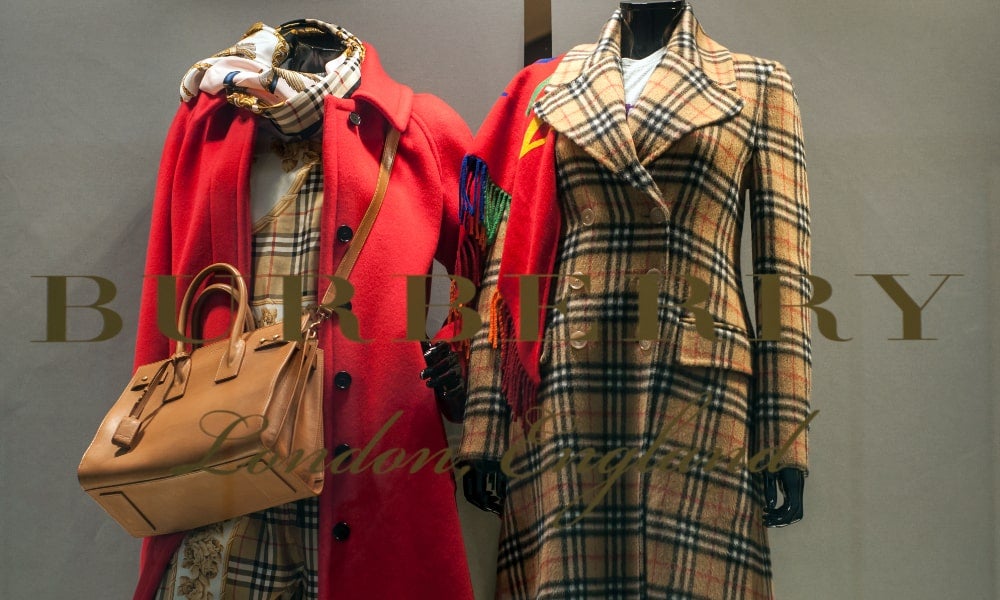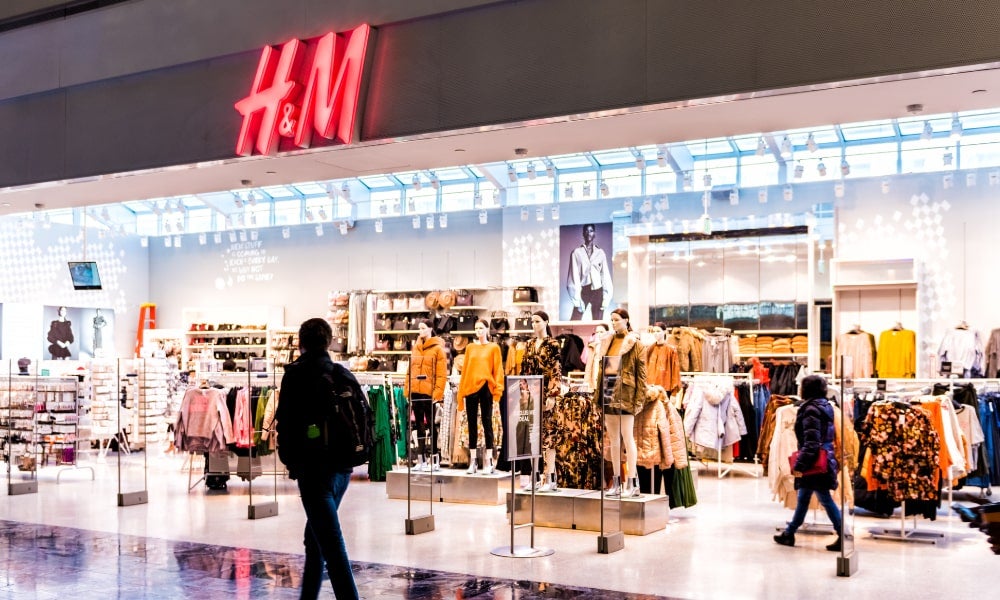Why is excess inventory bad for business?
Brands that manage excess inventory through forecasting sales or recycling win consumers' favour, while those that destroy unsold goods take a hit to their reputation
If you lived through the COVID-19 pandemic and witnessed the decline of brick-and-mortar stores, chances are you've felt the frustration of your desired product being listed as out of stock online. But would you buy from a brand if you knew it that torches its unsold goods in the name of ‘exclusivity’?
Many luxury brands, like Burberry and Coach, destroy products rather than donate, recycle, or sell them at a discounted price. But brands aren’t just burning billions worth of their products in the name of exclusivity. Sometimes, oversupply issues are caused by warehouse space shortages or other supply chain management issues. E-commerce giant Amazon, famous sportswear brand Nike, and fast fashion giant H&M have all come under fire for destroying excess inventory.
However, a recent study has revealed that the business case for wasting overstock is no longer relevant. Research by UNSW Business School, conducted in collaboration with Monash Business School, has found people react negatively towards luxury and non-luxury (fast-fashion) brands that destroy unsold goods. The study, Disposal-based scarcity: How overstock reduction methods influence consumer brand perceptions and evaluations, reveals the impact of companies' methods to reduce overstock on how consumers perceive them. The paper extends on the PhD thesis conducted by Oanh Nguyen, a former UNSW Business School student (now a lecturer at Can Tho University, Vietnam) in collaboration with co-authors Professor Tania Bucic and Associate Professor Liem Viet Ngo from the School of Marketing at UNSW Business School, and Harmen Oppewal, Professor of Marketing at Monash Business School.

The researchers explained: “Many companies have to deal with overstock regularly – products that didn’t sell or that, for whatever reason, they can no longer hold in their inventory. When this happens, those companies must find ways to dispose of the overstock. Some brands choose to incinerate it, while others send it to landfill. Other ways of handling overstock include recycling, donation and discounting. We wondered how such disposal choices affect consumer perceptions of the associated brands.”
The wasteful ways some brands deal with overstock
Many of the world’s luxury brands, like Burberry, Coach and Louis Vuitton, have been implicated in incinerating unsold stock. The rationale behind such actions is to preserve exclusivity and uphold the brand's 'exclusive' image. But it’s not just luxury brands that are guilty of waste; non-luxury fast fashion brands are also notorious culprits. For example, in 2017, H&M admitted that since 2013, they have burned 12 tonnes of new, unsold garments annually. Oversupply, it seems, is a global issue.
When it comes to how brands deal with overstock, there are also other issues compounding the problem: growing profit margins, warehouse space, fast inventory turnover of new products, and poor management systems to deal with vast purchase orders.
Read more: How to manage supply shortages in the face of unexpected events
According to the researchers, how a brand reduces its overstock acts as a “marketing signal” that influences brand reputation. Their paper examines how different ways of removing excess products (like burning unsold goods) can affect people's opinions and desire to shop for that brand.
The researchers tested whether the results would hold for luxury and non-luxury brands. "Based on what has already been reported in the media, we included one well-known luxury brand (Burberry) and one well-known non-luxury brand (retailer H&M) to ensure that participants could relate realistically to the brands in our experimental setting," explained the researchers, who used a series of experiments where samples of consumers from the US were shown different communications about brands and how they manage overstock.
They measured how respondents reacted to these messages regarding their perceptions of the brand’s exclusiveness, popularity and wastefulness and their brand evaluations and future purchase intentions. They also measured to what extent respondents felt a connection to the brand.

Destroying excess inventory harms brand reputation
The researchers conducted three experiments based on interviews with 3609 US-based participants. In the first study, the researchers used hypothetical brands in different product categories (clothing, accessories, and electronics) and examined the effects of destructive (such as incineration) and non-destructive (such as donation) overstock reduction methods. For this section, they interviewed roughly 400 participants about brand perception and the role of perceived “wastefulness”.
Their second study focused on a genuine luxury brand (Burberry) and added two more overstock reduction methods (recycling and lower prices at factory outlets). They also added a condition where there was no overstock at all. Some 1300 participants were asked to select a real product before being exposed to information about the disposal methods, and the study measured how the brand was perceived in terms of exclusivity and, again, its wastefulness.
A third study, which took in another 1300 participants, examined a non-luxury brand (H&M) and included additional measures such as perceived popularity and a sold-out condition.
Read more: Demand fulfilment: a key to supply chain management sustainability
Destructive disposal methods, such as incineration, harm brand image and are considered wasteful, according to the paper. Recycling, donation, and discounting methods are also viewed more positively by consumers, and can enhance brand evaluations. Maintaining a balance in supply so that products neither run out too quickly nor become overstocked, however, was seen as ideal as it signals both exclusivity and popularity.
However, some exceptions emerged. For luxury brands (and only for consumers who felt a closer connection to the brand), the research found that destroying overstock did result in greater perceived exclusivity and enhanced consumer brand perceptions. In this context, discounting had a negative effect on perceived exclusivity and brand evaluations.
But for the non-luxury brand, not having overstock or being sold out boosted its perceived ‘exclusivity’ and also its perceived popularity, resulting in enhanced brand evaluations. For this type of brand, the research also found that when incineration or discounting was used, people perceived the brand as less popular and consequently valued it less.
Importantly, across the study findings, the effects of perceived wastefulness were stronger than any effects of exclusivity or popularity.

Sustainable supply chains and managing excess stock
With the global backlash against unethical and unsustainable business practices, the research suggested brands have several incentives to improve their forecasting and deal with excess inventory. One solution is to manage inventory levels early on before they become an issue in-store or inside a warehouse. “Destroying products is seen as wasteful and damages brand perceptions," the researchers said. "In contrast, recycling, donating, and discounting methods, which are less destructive and indicate a lack of brand overstock, can enhance brand evaluations. These methods are viewed more positively by consumers.”
Notably, while the availability of a product, especially for luxury brands, does somewhat impact how consumers perceive its desirability and value, maintaining a balance in supply (so that products neither run out too quickly nor become overstocked) is seen as ideal, as it signals both exclusivity and popularity, positively influencing how people see the brand.
“In our investigation, we found that companies don’t usually disclose their method of overstock disposal. We found, though, that perceptions of disposal-based scarcity have far-reaching implications through the flow-on effects of disposal choice," according to the researchers. For example, when brands like H&M and Burberry receive news or social media coverage about how they handle redundant stock (and especially when it becomes known that such stock is being destroyed) consumers respond very negatively due to their sense of this being a very wasteful act.

Recycling was a clear winner out of all options open to such brands. “It was known from the literature that people have strong negative reactions to wastefulness, but we had not expected this effect to dominate the other possible effects of overstock disposal methods, including for luxury products," the researchers said.
"In contrast, we were surprised that the effects of messages about overstock reduction had very little impact on perceptions of exclusivity and also had relatively little impact on popularity – except that when consumers hear that if stock is being disposed, they conclude the product is or has become less popular, which in turn lowers their brand evaluations."
Overall, when choosing an overstock reduction strategy on the basis of consumer perceptions of exclusivity, popularity, and wastefulness, the researchers said that marketers need to note the trade-offs involved. If they place more emphasis on being perceived as less wasteful or, more generally, as sustainable, the researchers suggested marketers might communicate their uses of recycle, donate, and discount disposal methods.
Subscribe to BusinessThink for the latest research, analysis and insights from UNSW Business School
Finally, they said policymakers and government officials should make rules about how companies get rid of such products. For example, in France, the destruction of unsold products is prohibited, and brands are required to reuse, donate, or recycle instead. In Germany, businesses are required to formally report the overstock disposal volumes and to supply justification for the decision.
To effect more widespread change in how overstock is managed, the researchers suggested governments could also incentivise eco-friendly approaches, and in the future, they might make it law that companies must use such eco-friendly methods.
